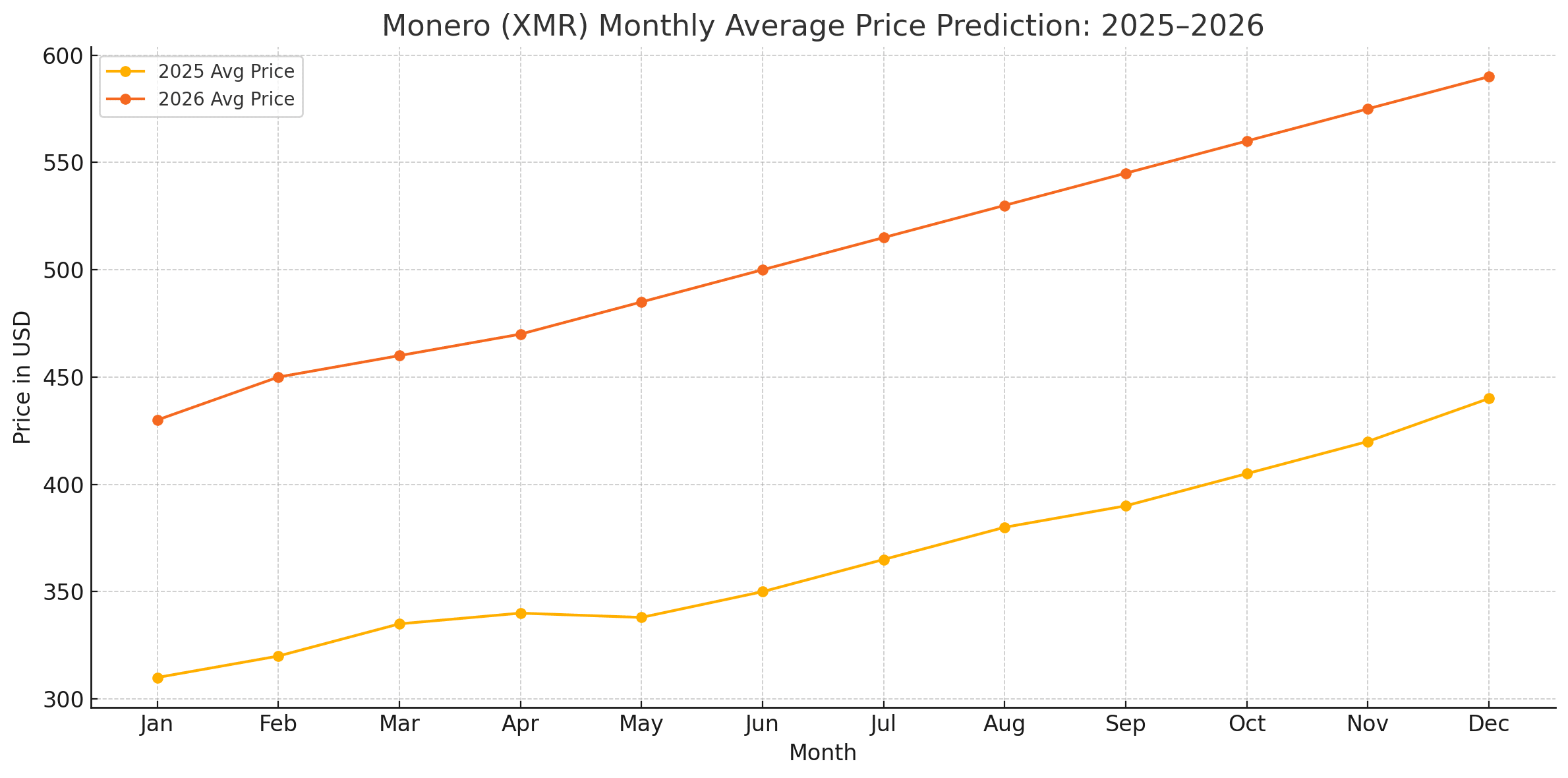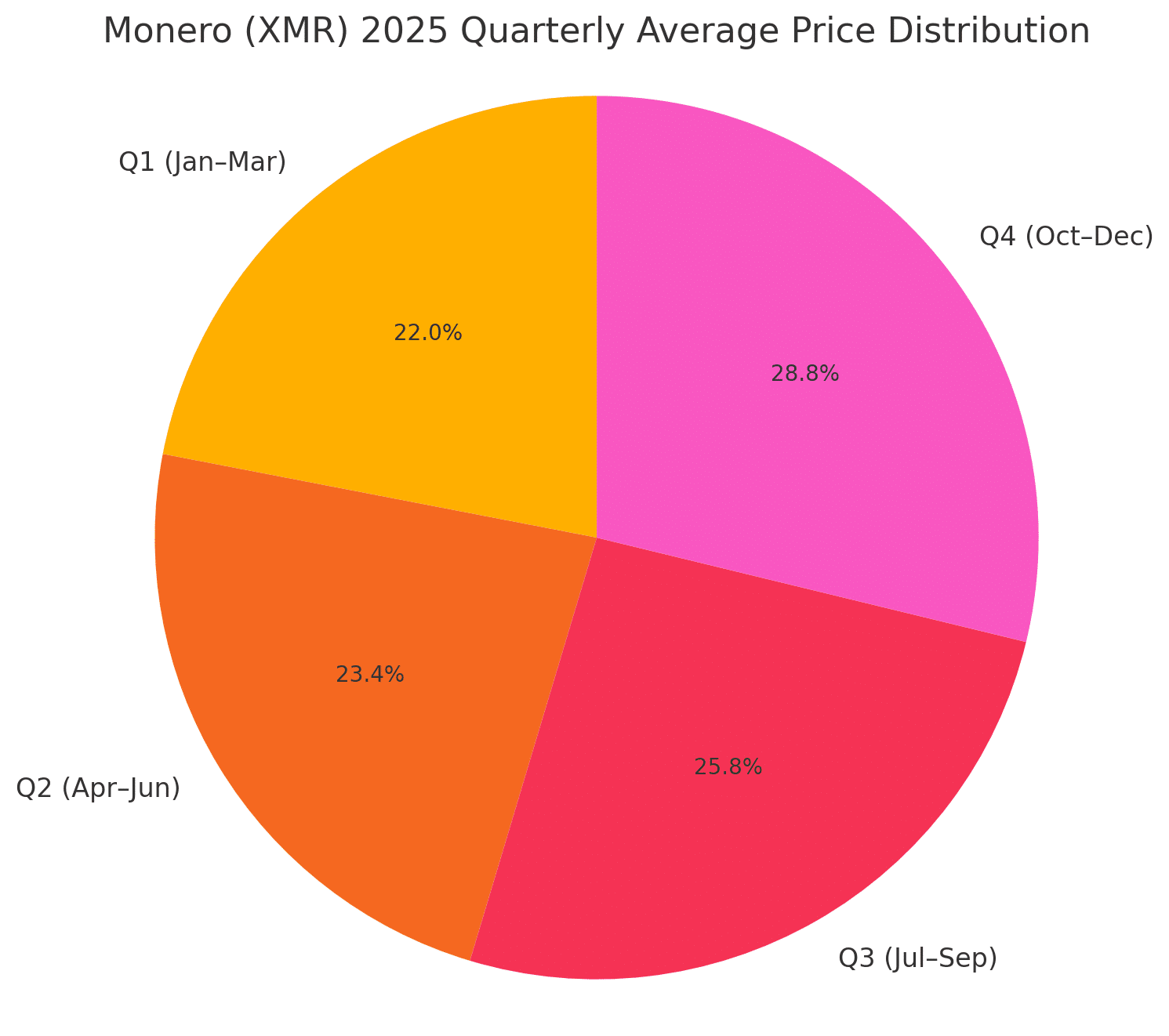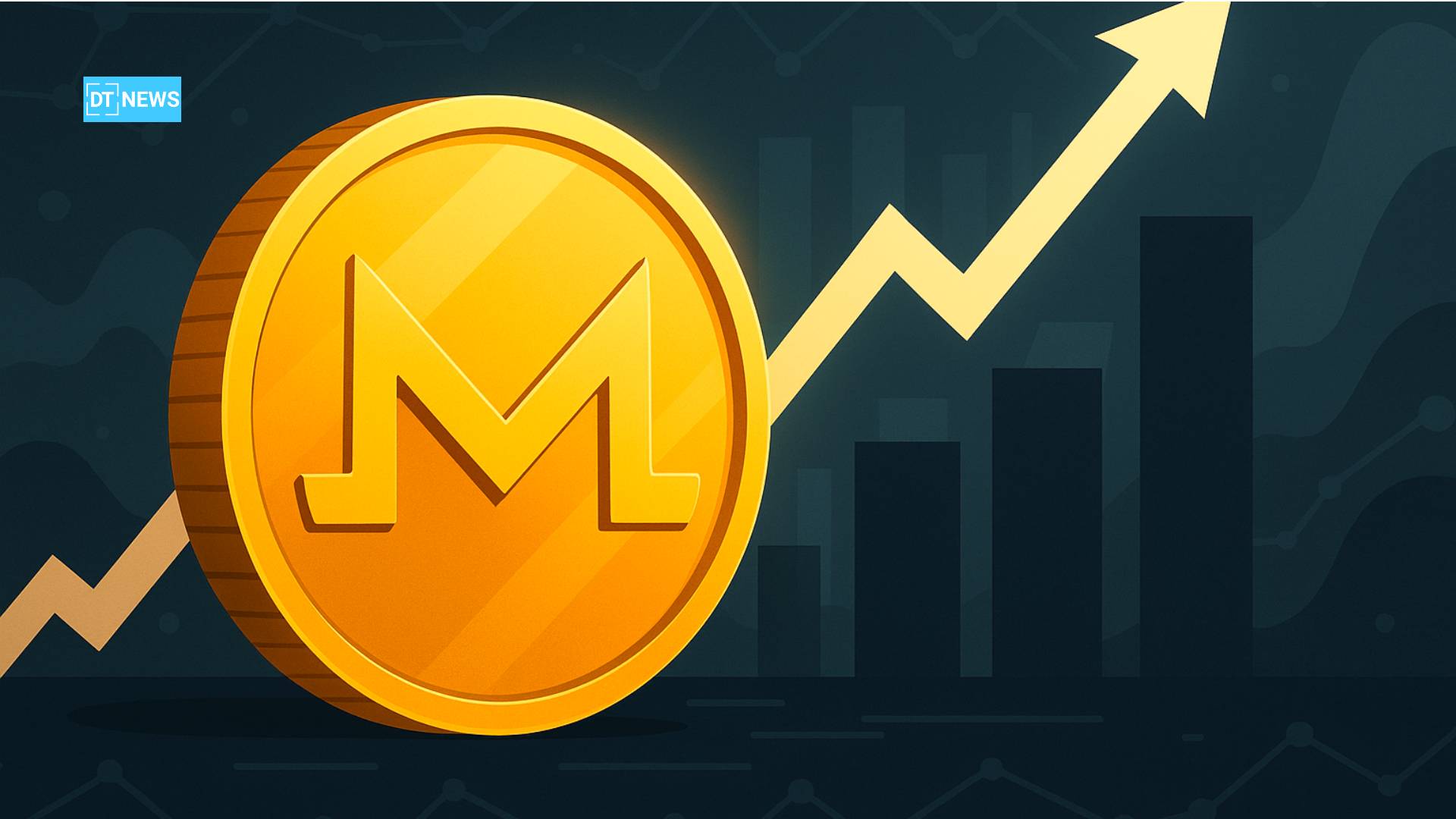Monero (XMR), the most prominent privacy-focused cryptocurrency, is entering a critical phase in 2025. With rising geopolitical tensions, regulatory debates, and digital privacy becoming a global concern, investors are revisiting Monero’s long-term potential.
- 1. The Role of Monero in a Privacy-Focused Future
- 2. What Happened in 2024: The Setup for 2025
- 3. 2025 Monero Price Forecast: Steady Climb or Resistance Trap?
- 4. What to Expect in 2026: Regulation vs. Adoption
- 5. Should You HODL or Exit? Long-Term Prospects
- Conclusion
- Frequently Asked Questions (FAQs)
- What is Monero (XMR) used for?
- Is Monero legal?
- Will Monero reach $1000?
- Why do regulators dislike Monero?
- Can Monero be tracked?
- Glossary of Key Terms
As of May 17, 2025, XMR is trading at $338.46, recovering steadily from 2024’s volatility. But can Monero ride this wave to reclaim its all-time high? Or will increasing regulatory pressure choke its momentum?
This article presents a deep dive into Monero’s price potential for 2025 and 2026, combining real data, market catalysts, expert forecasts, and updated monthly price tables to give readers a data-driven yet human view of where XMR is heading.
1. The Role of Monero in a Privacy-Focused Future
Monero is not just another altcoin, it’s a symbol of financial sovereignty. Unlike Bitcoin or Ethereum, every Monero transaction is confidential by default. Using advanced cryptography (RingCT, stealth addresses, and Bulletproofs), XMR ensures that sender, receiver, and amount remain hidden. This privacy-first approach gives Monero unique value, especially in regions with tightening financial surveillance.
Governments may frown upon privacy coins, but Monero has a loyal user base and growing underground utility, particularly on privacy-driven platforms and decentralized marketplaces. Its relevance might only grow as global surveillance becomes more mainstream.
2. What Happened in 2024: The Setup for 2025
2024 was a rollercoaster for XMR. The coin dipped below $200 amid wider market corrections but showed resilience despite delistings from centralized exchanges due to regulatory heat. However, Monero found new strength as decentralized exchanges (DEXs) and atomic swaps enabled peer-to-peer trading outside the centralized system.
Staking discussions and community-led development (especially the Seraphis protocol upgrade) also injected optimism into the Monero ecosystem. By Q4 2024, XMR had bounced back to the $300–$340 range, setting the tone for a more bullish 2025.

3. 2025 Monero Price Forecast: Steady Climb or Resistance Trap?
Based on current trends and expert analysis from CoinCodex, CoinPedia, and DigitalCoinPrice, Monero is likely to follow a gradual yet volatile path in 2025. Privacy debates are heating up again as surveillance laws tighten across the EU and Asia, giving XMR renewed relevance.
Key Catalysts in 2025:
Decentralized exchange growth supporting privacy coin liquidity
Seraphis protocol improving scalability and obfuscation
Rising cybercrime concerns fuel the demand for anonymous transactions
2025 Price Forecast
Analysts have provided a range of predictions for Monero’s price in 2025:
CoinCodex: Predicts a trading range between $195.87 and $231.08 by December 2025, with an average price of $211.70.
CoinPedia: Estimates a potential high of $356.82, a low of $194.86, and an average around $255.84.
DigitalCoinPrice: Projects that Monero could reach up to $741.48 by the end of 2025, breaking its previous all-time high.
These forecasts suggest that Monero’s price in 2025 could vary significantly, depending on market conditions and adoption rates.
XMR Monthly Price Table for 2025 (Projected)
| Month | Low ($) | Avg ($) | High ($) |
|---|---|---|---|
| January | 295 | 310 | 330 |
| February | 300 | 320 | 345 |
| March | 310 | 335 | 360 |
| April | 320 | 340 | 365 |
| May | 325 | 338 | 368 |
| June | 335 | 350 | 375 |
| July | 345 | 365 | 395 |
| August | 355 | 380 | 410 |
| September | 360 | 390 | 420 |
| October | 370 | 405 | 440 |
| November | 380 | 420 | 455 |
| December | 390 | 440 | 480 |
By the end of 2025, XMR may test $480, with an average around $440 if market sentiment remains favorable.
4. What to Expect in 2026: Regulation vs. Adoption
2026 could be a make-or-break year for Monero. On one hand, regulatory frameworks for crypto privacy will likely intensify, especially in G20 nations. On the other hand, demand for uncensorable money is rising in parts of the world where fiat collapses are unfolding (e.g., Argentina, Lebanon, Nigeria).
Key Predictions for 2026:
Widespread adoption in unstable economies
Further push toward Layer 2 privacy enhancements
Price resistance around the $600 zone if adoption outpaces regulation

Looking ahead to 2026, predictions indicate potential growth:
CoinCodex: Forecasts a trading range between $135.19 and $271.11, with an average price of $182.30.
CoinPedia: Suggests a potential high of $419.64, a low of $260.39, and an average around $340.01.
DigitalCoinPrice: Predicts Monero could reach up to $843.36 by the end of 2026.
These projections indicate a positive outlook for Monero, with potential for significant price appreciation.
XMR Monthly Price Table for 2026 (Projected)
| Month | Low ($) | Avg ($) | High ($) |
|---|---|---|---|
| January | 410 | 430 | 460 |
| February | 420 | 450 | 480 |
| March | 430 | 460 | 495 |
| April | 440 | 470 | 510 |
| May | 450 | 485 | 530 |
| June | 460 | 500 | 550 |
| July | 470 | 515 | 570 |
| August | 480 | 530 | 585 |
| September | 495 | 545 | 600 |
| October | 505 | 560 | 620 |
| November | 520 | 575 | 640 |
| December | 530 | 590 | 660 |
By December 2026, XMR could reach as high as $660, assuming network improvements and external demand remain strong.
5. Should You HODL or Exit? Long-Term Prospects
Monero remains a niche asset—but a powerful one. It’s not designed for hype or meme status, but for those who value real financial autonomy. Its technology is proven, its community is loyal, and its use case grows stronger with each breach of privacy in the digital world.
If privacy coins survive regulatory fire, XMR could be one of the few tokens left standing in a deeply controlled crypto landscape. For now, it’s one of the most resilient altcoins with a tangible real-world purpose.
Conclusion
Monero is quietly staging a comeback in 2025, gaining momentum as privacy resurfaces as a core value in crypto. Despite legal headwinds, XMR’s decentralized ethos and community-first development make it a unique long-term bet.
While price projections vary, most suggest a slow but steady climb, possibly breaching $600 by the end of 2026. However, investors should remain cautious and consider the impact of upcoming global regulations on privacy coins.
Frequently Asked Questions (FAQs)
What is Monero (XMR) used for?
Monero is primarily used for private, untraceable transactions on the blockchain. It’s favored by users who prioritize anonymity.
Is Monero legal?
In most countries, Monero is legal to own and use. However, some centralized exchanges have delisted it due to regulatory concerns.
Will Monero reach $1000?
While possible in a bullish scenario post-2026, reaching $1000 would require mass adoption, DEX dominance, and easing regulatory pressure.
Why do regulators dislike Monero?
Because Monero’s privacy features make it difficult to trace transactions, regulators worry about its use in illicit activities.
Can Monero be tracked?
No. Monero transactions use stealth addresses, ring signatures, and confidential amounts, making them nearly impossible to trace.
Glossary of Key Terms
RingCT: Ring Confidential Transactions; conceals transaction amounts.
Stealth Address: A one-time address used for each Monero transaction to hide the recipient.
DEX (Decentralized Exchange): A platform where users trade crypto directly without intermediaries.
Seraphis: An upcoming Monero protocol upgrade focused on enhanced privacy and scalability.
Atomic Swaps: Enable cross-chain transactions without centralized exchanges.
Sources and References
Note: Cryptocurrency investments carry significant risks. This analysis is for informational purposes only and does not constitute financial advice.



















































































































